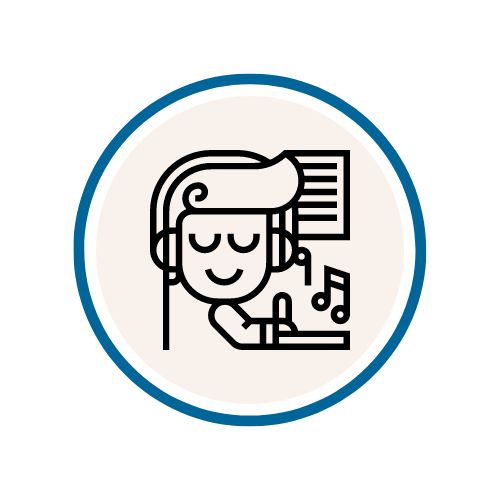
Sensory and physical impairments
It is important that everyone’s study is accessible. It is possible to receive support for the needs related to teaching and study practices during higher education studies, for example, with various facilities, aids and materials.
The university must also take into account the accessibility of the environment in the organisation of teaching activities. This means e.g.
- smooth movement in the yard and parking area,
- easy access to the educational institution and its facilities (e.g. lifts, accessible toilets),
- clear instructions and signs,
- an auditory and visual environment that takes into account sensory impairments,
- choice of materials for workspaces and workspaces, and
- fragrance-free environment.
More information on the accessible design of environments can be found in the electronic guide of the Finnish Association of People with Disabilities.
For more information on the accessibility of Lapland’s higher education institutions, contact the service advisors of Lapland University of Applied Sciences and the University of Lapland Campus Services.
Obstacles in mobility
Various obstacles to mobility can be congenital or the result of, for example, an accident or illness. The functional capacity and mobility of students with reduced mobility are individual and may be temporarily or permanently impaired. Students may have access to various mobility and study aids, a personal assistant or, for example, an assistance dog. More information on supporting the studies of students with reduced mobility can be found in the ESOK project’s guide Physically disabled students and higher education.
Visual impairment
A visually impaired person may be visually impaired or blind. Weakness of sight can manifest itself in a variety of ways. For example, one person may see read but not see their surroundings, while another person may be able to move around but not see read. Complete blindness is rare. Students can use various mobility and study aids, or they can be assisted by a personal assistant or guide dog. The visually impaired person has the right to use a guide dog in public spaces.
The website of the Finnish Federation of the Visually Impaired contains more information on the rights and services of the visually impaired.
Check out also the ESOK project’s guide: Blind and low vision students and higher education
Hearing impairment
A person with hearing impairment has some degree or quality of hearing loss, from mild hearing loss to complete deafness. Students with hearing loss students usually use sign language and can use sign language interpretation or written interpretation to help them study. A student with hearing loss usually communicates by speech and uses a hearing aid or cochlear implant as a hearing aid. In addition to hearing aids, students with hearing loss can use other technical aids and, for example, read lips to support hearing.
Taking care of the accessibility of studying for a hearing-impaired student means, among other things, a good listening environment and unobstructed communication.